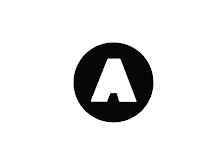While exploring 3D light
projections for a recent research & development
project, I came across
a fascinating concept
that uses light to bring seemingly banal spaces to
life. As I have a
background in photography, I was intrigued by the way this
installation demonstrated the way
you can literally paint a scene with light
to reveal aspects of your
choosing. This gives you control over how a viewer
interprets the
space and, in a sense, you become the director of your own creation.
I have seen a number of
similar light projection projects using buildings
as a canvas, but this is
more unusual, more abstract and at a different
scale; in a way you could say
it is more liberated than its predecessors. The input and control from widely
available kinetic devices makes me wonder whether such projections will
become
more widespread in the future, grasping public attention and imagination in
much the same way as 3D printing, bringing this dynamic
and exciting art form
to the masses. I for one hope so.
Patterns Emerge, by Nature Graphique can be seen online here.
(Written by David Connolly, Assembly Studios' Head of CGI)
-------------------------------------------------------------------------
-------------------------------------------------------------------------
Download our Guide "Zero Risk Approach to CGI "
- Email Marketing by GetResponse





